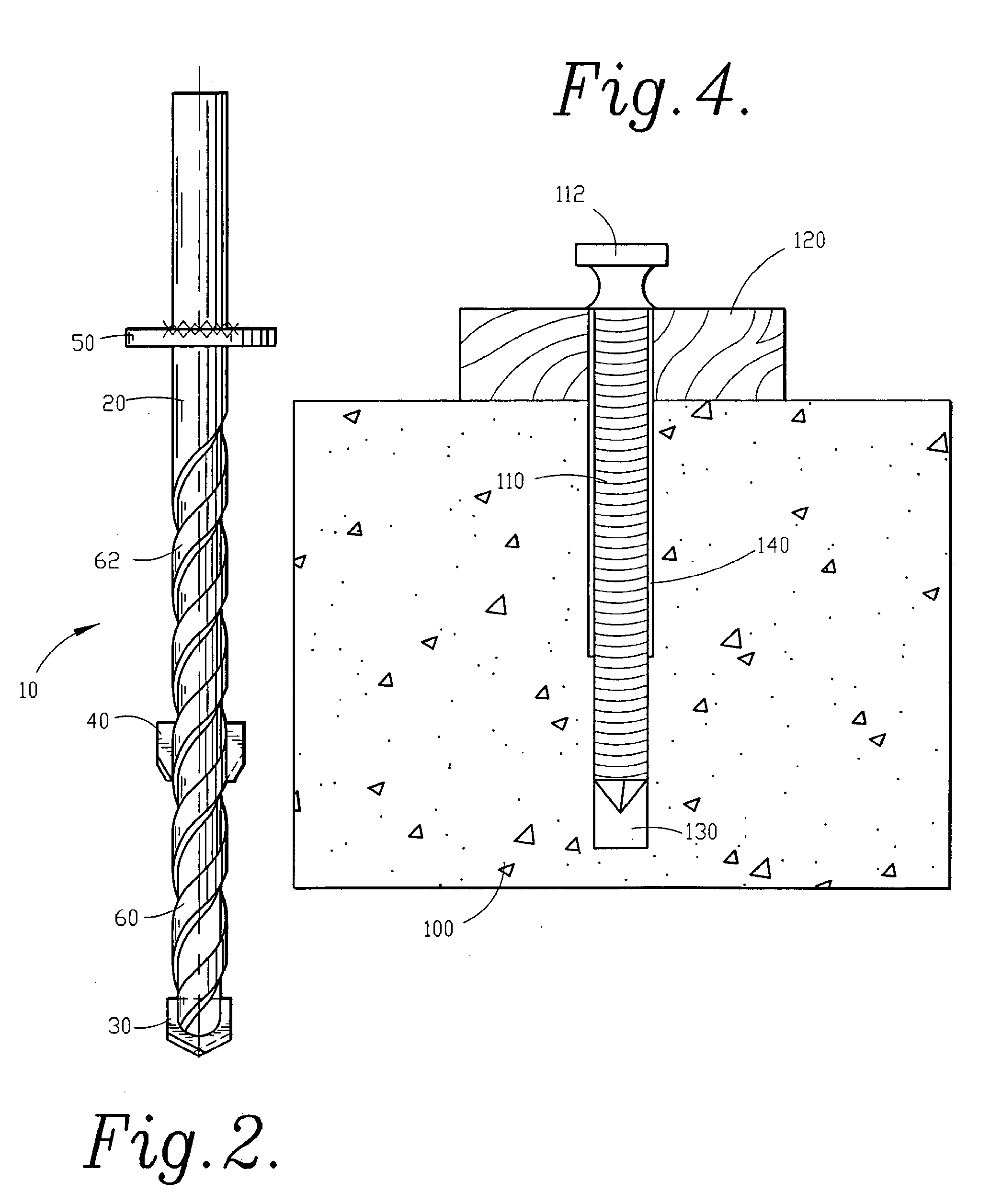Anchoring drill bit, system and method of anchoring
a technology of anchoring drill bit and drill bit, which is applied in the direction of drilling/boring measurement device, twisting drill, turning machine accessories, etc., can solve the problems of damage to the surface of the concrete, etc., and achieve the effect of low cos
- Summary
- Abstract
- Description
- Claims
- Application Information
AI Technical Summary
Benefits of technology
Problems solved by technology
Method used
Image
Examples
Embodiment Construction
[0026] As required, a detailed embodiment of the present inventions is disclosed herein; however, it is to be understood that the disclosed embodiment is merely exemplary of the principles of the invention, which may be embodied in various forms. Therefore, specific structural and functional details disclosed herein are not to be interpreted as limiting, but merely as a basis for the claims and as a representative basis for teaching one skilled in the art to variously employ the present invention in virtually any appropriately detailed structure.
[0027] Referring to FIG. 1 a front sectional view of one embodiment of a two-stage drill bit of the instant invention is shown in which drill bit 10 includes shank / shaft 20, first stage cutter 30 on shaft 20, second stage cutter 40 on shaft 20 spaced apart from first stage cutter 30, and depth gage 50 on shaft 20 spaced apart from second stage cutter 40 in a direction opposite first stage cutter 30. As is shown in FIG. 1, first stage cutter...
PUM
| Property | Measurement | Unit |
|---|---|---|
| diameter | aaaaa | aaaaa |
| diameter | aaaaa | aaaaa |
| diameter | aaaaa | aaaaa |
Abstract
Description
Claims
Application Information
 Login to View More
Login to View More - R&D
- Intellectual Property
- Life Sciences
- Materials
- Tech Scout
- Unparalleled Data Quality
- Higher Quality Content
- 60% Fewer Hallucinations
Browse by: Latest US Patents, China's latest patents, Technical Efficacy Thesaurus, Application Domain, Technology Topic, Popular Technical Reports.
© 2025 PatSnap. All rights reserved.Legal|Privacy policy|Modern Slavery Act Transparency Statement|Sitemap|About US| Contact US: help@patsnap.com



